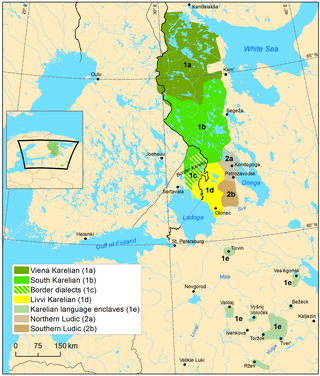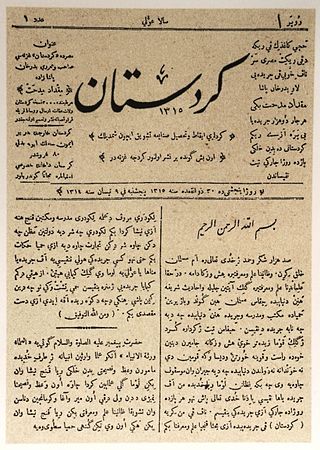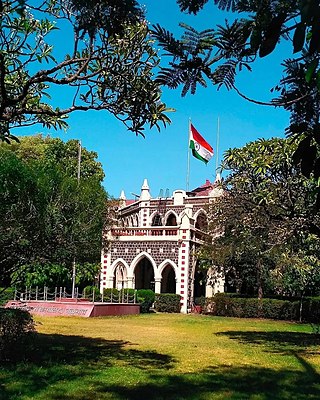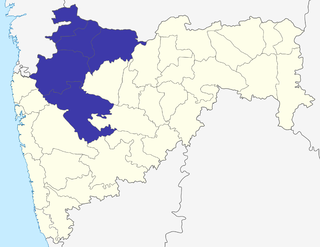
The Inuit languages are a closely related group of indigenous American languages traditionally spoken across the North American Arctic and the adjacent subarctic regions as far south as Labrador. The Inuit languages are one of the two branches of the Eskimoan language family, the other being the Yupik languages, which are spoken in Alaska and the Russian Far East. Most Inuit people live in one of three countries: Greenland, a self-governing territory within the Kingdom of Denmark; Canada, specifically in Nunavut, the Inuvialuit Settlement Region of the Northwest Territories, the Nunavik region of Quebec, and the Nunatsiavut and NunatuKavut regions of Labrador; and the United States, specifically in northern and western Alaska.

Karelian is a Finnic language spoken mainly in the Russian Republic of Karelia. Linguistically, Karelian is closely related to the Finnish dialects spoken in eastern Finland, and some Finnish linguists have even classified Karelian as a dialect of Finnish, but nowadays it is widely considered a separate language. Karelian is not to be confused with the Southeastern dialects of Finnish, sometimes referred to as karjalaismurteet in Finland. In the Russian 2020–2021 census, around 9,000 people spoke Karelian natively, but around 14,000 said they were able to speak the language. There are around 11,000 speakers of Karelian in Finland. And around 30,000 people in Finland have at least some knowledge of Karelian.
Afar is an Afroasiatic language belonging to the Cushitic branch. It is spoken by the Afar people inhabiting Djibouti, Eritrea and Ethiopia.

Avar, also known as Avaric, is a Northeast Caucasian language of the Avar–Andic subgroup that is spoken by Avars, primarily in Dagestan. In 2010, there were approximately one million speakers in Dagestan and elsewhere in Russia.

Lozi, also known as Silozi and Rozi, is a Bantu language of the Niger–Congo language family within the Sotho–Tswana branch of Zone S (S.30), that is spoken by the Lozi people, primarily in southwestern Zambia and in surrounding countries. The language is most closely related to Northern Sotho, Tswana (Setswana), Kgalagari (SheKgalagari) and Sotho. Lozi, sometimes written as Rotse, and its dialects are spoken and understood by approximately six per cent of the population of Zambia. Silozi is the endonym as defined by the United Nations. Lozi is the exonym.

Saraiki is an Indo-Aryan language of the Lahnda group. It is spoken by 28.84 million people, as per the 2023 Pakistani census, taking prevalence in Southern Punjab with remants in Northern Sindh and the Derajat region. This term was first introduced for the Multani, Riyasti and Derawali dialects of the Punjabi language in 1962 as a result of a political movement.

Kutchi or Kachhi is an Indo-Aryan language spoken in the Kutch region of Gujarat, and some parts of Rajasthan, India and Sindh, Pakistan.

Kurdish is written using either of two alphabets: the Latin-based Bedirxan or Hawar alphabet, introduced by Celadet Alî Bedirxan in 1932 and popularized through the Hawar magazine, and the Kurdo-Arabic alphabet. The Kurdistan Region has agreed upon a standard for Central Kurdish, implemented in Unicode for computation purposes. The Hawar alphabet is primarily used in Syria and Turkey, while the Kurdo-Arabic alphabet is commonly used in Iraq and Iran. The Hawar alphabet is also used to some extent in Iraqi Kurdistan. Two additional alphabets, based on the Armenian and Cyrillic scripts, were once used by Kurds in the Soviet Union, most notably in the Armenian Soviet Socialist Republic and Kurdistansky Uyezd.

Nandurbar district is an administrative district in the northwest corner of Maharashtra state in India. On 1 July 1998 Dhule was bifurcated as two separate districts now known as Dhule and Nandurbar. Nandurbar is a tribal-dominated district, The district headquarters are located at Nandurbar city. The district occupies an area of 5,955 square kilometres (2,299 sq mi) and has a population of 1,648,295 of which 16.71% were urban.

Kurukh, also Kurux, Oraon or Uranw, is a North Dravidian language spoken by the Kurukh (Oraon) and Kisan people of East India. It is spoken by about two million people in the Indian states of Jharkhand, Chhattisgarh, Odisha, West Bengal, Assam, Bihar and Tripura, as well as by 65,000 in northern Bangladesh, 28,600 of a dialect called Uranw in Nepal and about 5,000 in Bhutan. The most closely related language to Kurukh is Malto; together with Brahui, all three languages form the North Dravidian branch of the Dravidian language family. It is marked as being in a "vulnerable" state in UNESCO's list of endangered languages. The Kisan dialect has 206,100 speakers as of 2011.

Jalgaon district is a district in Maharashtra, India. Its headquarters is the Jalgaon city.

Nashik Division is one of the six divisions of India's Maharashtra state and four of its five districts form Uttar Maharashtra. The three northernmost districts of Uttar Maharashtra form most of the historic Khandesh region which covers the northern part of the division in the valley of the Tapti River. Nashik Division is bound by Konkan Division and the state of Gujarat to the west, Madhya Pradesh state to the north, Amravati Division and Marathwada to the east, and Desh to the south.

Dhule district is a district of Maharashtra, India. The city of Dhule is the administrative headquarters of the district. It is part of North Maharashtra.

Ghana is a multilingual country in which about eighty languages are spoken. Of these, English, which was inherited from the colonial era, is the official language and lingua franca. Of the languages indigenous to Ghana, Akan is the most widely spoken in the south. Dagbani, Dagare, Sisaala, Waale, and Gonja are among the most widely spoken in the northern part of the country.

The languages of Austria include German, the official language and lingua franca; Austro-Bavarian, the main dialect outside Vorarlberg; Alemannic, the main dialect in Vorarlberg; and several minority languages.
Mal Paharia is a language spoken by 51,000 of 110,000 ethnic Mal Paharia in the states of Jharkhand and West Bengal in India, and regions of Bangladesh. The language is also known as Mal Pahoria, Malto, Malti, Paharia, Parsi, and Mal Pahariya. It has been variously regarded as a Bengali–Assamese language, a dialect of Malto, and a mixed Dravidian–Indo-Aryan language. There is a generally positive attitude among speakers of the language towards it, but it is considered vulnerable as some speakers have shifted to Bengali. Mal Paharia uses the Devanagari script and rules for its writing, reading, and speech.
Mundari (Munɖari) is a Munda language of the Austroasiatic language family spoken by the Munda tribes in eastern Indian states of Jharkhand, Odisha and West Bengal and northern Rangpur Division of Bangladesh. It is closely related to Santali and Bhumij. Mundari Bani, a script specifically to write Mundari, was invented by Rohidas Singh Nag. It has also been written in the Devanagari, Odia, Bengali, and Latin writing systems.

Khandesh is a geographic region in Maharashtra, India. It was made up of present Jalgaon, Dhule and Nandurbar districts. It also said that Burhanpur District of Madhya Pradesh was also its part.
It was thought that Ahirani or Khandeshi dialect is spoken in Old Khandesh district. Now old Khandesh District of Maharashtra is divided in several districts. Those are Jalgaon district, Dhulia District, Nandurbar district, Part of Nasik District and part of Aurangabad District. Ahiras spoke Ahirani dialect. Ahir Wani means dialect of Ahiras. Wani means dialect. It is known as Ahirani as it was spoken by Ahiras. Same dialect in this region is known as Khandeshi dialect. Because it is dialect of old Khandesh district. Khandeshi is regional name and Ahirani is social name for same dialect. Ahirani was spoken within the basin of Satpura Range and Sanhyadri Range. High picks of Satpuda, of Sanhyadri range did not allowed to spread this dialect out of this closed area of Khandesh District. But similar dialect having similar social rituals, similar lexicography, phonology and syntax newly foundout by Dr. Ramesh Suryawanshi in Melghat area of Amaravati district. Near about fifty villages where Gawali people reside speak Gawali dialect. This dialect was not included in Griererson's Survey of India or Dr. Ganesh Devi's recent Bhasha Surveykshan. Gavali dialect and Ahirani dialect are same and one. Ahiras of Khandesh as well as Gawali of Melghat claim as they belong to God Shri Krishna's family. Both having back history of having relation with Ashirgad Fort, and Goddess Asha Devi. Both are cowherds indulged in business of milk and cattle. Gawali's of Malghat are not literate and reside in forest. Ahiras reside in towns and villages which are connected to metrocities with roads and railways. Ahiras left most of their past rituals and traditions. Ahiras of Khandesh nowadays are known by their business where as Gawalis are milkmen and cowherds. Most of their surnames are different. Gavali's of Melghat give milk and milk products free of cost to villagers with rotation as per their Surnames. It is considered that Gawali family of Shaniware Surname should distribute milk and milk products free of cost on Saturday. Gavali reside in Paratwada, Chandur, Melghat, Amarwati, Yeotmal Chimur tehsils of Vidarbhs Region. A legend discloses history of Gawali's migration to Melghat area. Lord Krishna went to Kaundanyapur with these Gawalis along with their several cattle. As lord Krishna returned with his beloved Rukmani from Kaundannyapur. Some Gawalis with their cattle decided to reside therein Melghat area as it was rich grassy land, good for their cattle. This legendary story discloses the fact that Ahiras of Khandesh and Gawalis of Melghat both are of same race. So their dialect is same and one. This face is just disclosed by Dr. Ramesh suryawanshi in his article published in Critical Enquiry Vol.VI Issue IV. Oct.- Dec. 2014 by Institute of Knowledge Engineering.
The Sunuwar alphabet is an alphabet developed by Krishna Bahadur Jentich in 1942, to write the Sunwar language, a member of the Kiranti language family spoken in Eastern Nepal, as in Sikkim. It is recognised in Sikkim and used as an official writing system. The alphabet has 33 letters, 10 numerals and 1 'auspicious sign'.















